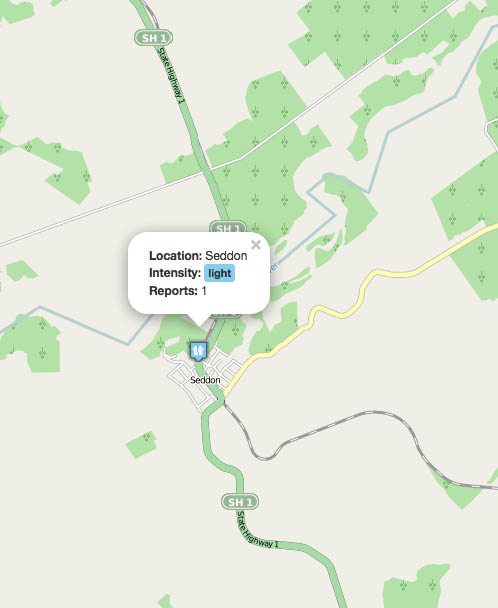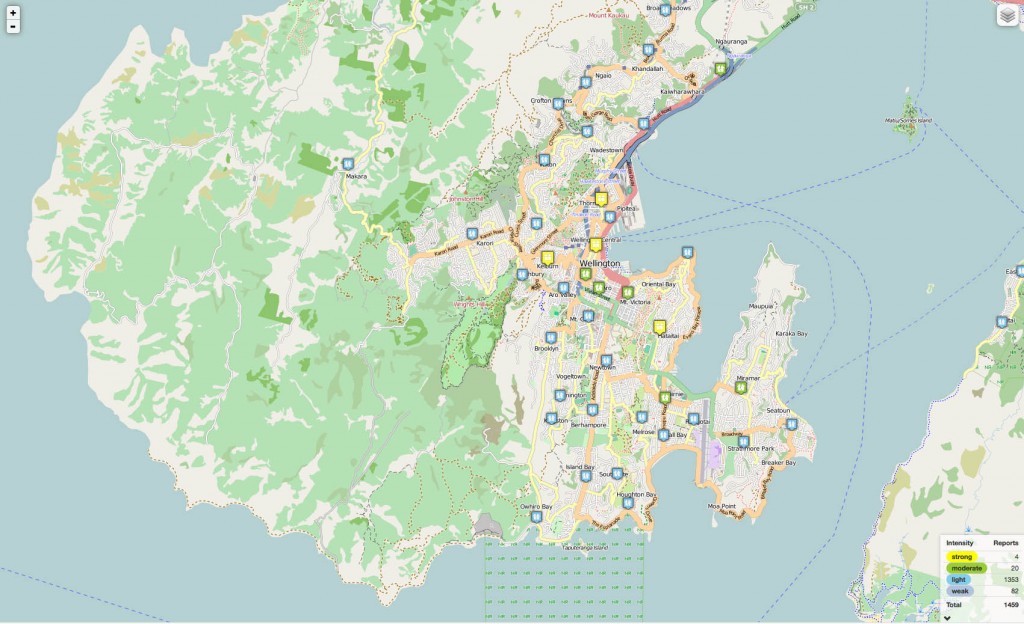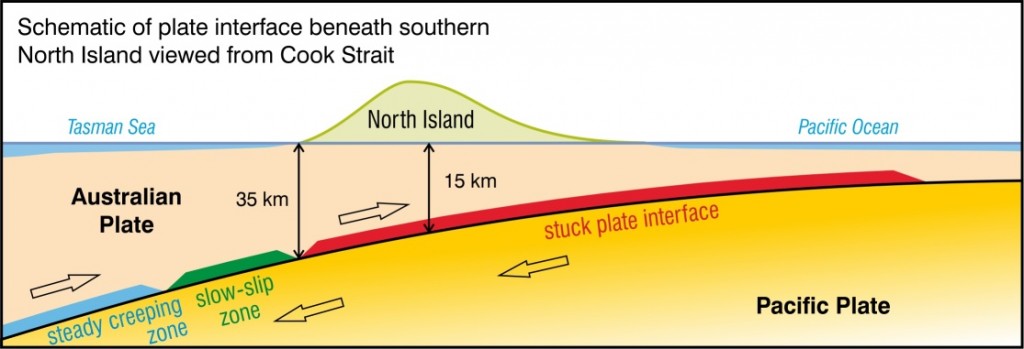There have been hundreds of earthquakes, if not thousands, in the days following last week’s Seddonator (TM name courtesy of Eye of the Fish, conflation of Seddon and Dominator). A nice little wobbly number just then (11.10am) prompted me to go to the Geonet website and check – it was a 4.9 in the middle of the Cook Strait again – or, as Geonet say, 30km east of Seddon. There’s something big going on down there, even if the one remaining resident of Seddon could only just be bothered to report it in.

What i do love about living in NZ is the camaraderie about all this – the little Fish were all gathered round, excitedly blowing bubbles (not a MJ reference, but hard to avoid it), and we all felt the jelly roll. The good burgers of Wellington evidently leapt to their computers and filed Felt Reports as soon as they could – barely ten minutes later, hundreds of reports had been filed in Wellington.

But there is more to this than meets the eye, or that wobbles the butt-cheeks to be more accurate. We have a slow slip event going on.

Geonet scientist Caroline Little reported in early June that a “Slow-slip” event was taking place, as expected, in 2013:
“To the west of Wellington, the equivalent of a magnitude 7 earthquake is happening right now, 40 km below ground. This would be Wellington’s largest earthquake in 150 years, yet nothing is felt at the surface. Even our sensitive earthquake recording instruments hardly notice a thing. This is because, unlike a normal earthquake, these plate movements happen very slowly in a process known as “slow-slip eventsâ€. This Kapiti slow-slip event is affecting an area spanning over 100 km from Levin to the Marlborough Sounds. Conventional earthquakes happen when one side of a fault moves past the other suddenly. A similar process occurs with slow slip, except it takes much longer for the fault to move and release energy, this is why slow-slip events are often called silent earthquakes.
GeoNet’s continuously-running GPS instruments in Wellington and Kapiti show that the Pacific and Australian tectonic plates are slipping past each other more rapidly than usual. This has been going on since January of this year, and will most likely continue for several months. These movements represent the equivalent of a magnitude 7 earthquake on the plate boundary, at 40 km depth.”

It’s not clear to me yet whether these events are connected.
Certainly, it is the fast moving earthquakes that affect us more, due to that pesky subducting Pacific Plate. It’s funny that we all accept this explanation so readily now – whereas just a century ago, they still had no idea what caused them. After the 1931 Hawkes Bay quake, one learned gentleman informed people that it was due to the weight of the water in the ocean, breaking the back of the crust beneath. But here is the real culprit:






“burgers”
Giggle *snort* !
Wipe that snot from your nose young Seamonkey! Stop this Madness! I can refer you to the following from Dictionary.com:
burgher (ˈbÉœËÉ¡É™)
— n
1. a member of the trading or mercantile class of a medieval city
2. a respectable citizen; bourgeois
3. archaic a citizen or inhabitant of a corporate town, esp on the Continent
4. ( South African ) history
a. a citizen of the Cape Colony or of one of the Transvaal and Free State republics
b. ( as modifier ): burgher troops
[C16: from German Bürger , or Dutch burger freeman of a borough ]
burgher
1560s, “freeman of a burgh,” from M.Du. burgher, from M.H.G. burger, from O.H.G. burgari “inhabitant of a fortress,” from burg “fortress, citadel” (see borough).
Online Etymology Dictionary, © 2010 Douglas Harper
Rule #5 of the internet* – you may have written something eloquent, well-reasoned, perspicacious and cogent but if there’s one spelling mistake in there that’s the first thing people will jump on.
Thanks for dredging up the slow-slip reference – I’d heard of it at the time but failed to make the connection to the current swarm. Do you think it’s related to the fact that most of these shakes have been S-waves dominant ie rollers not jolters?
As for the plate tectonics theory being recent – I remember Welles’ “Outline of History” (written in the 50″s?) referring to the new idea of plate tectonics and how there might be something to it
*The other rules are more boring
sorry – Outline of History was in the 1920’s
60 – I wanna hear the other rules too!
Off the top of my head Rule 1 states that whatever you can imagine, there will be a porn version of it
also
Rule 63 is a rule of the internet that reads as follows: “For any given male character, there is a female version of that character.” This rule’s exceptions are only in the instance that A: the male character is already so androgynous that a female version would be basically the same, or B: the female version hasn’t been drawn yet.
Also Godwin’s Law: the first person in any argument to call someone else a Nazi automatically loses that argument
There are others but it’s been a long evening – Urban Dictionary is your friend
Speaking of jumpy pedantry, I had no idea that the awesome Orson Welles had not only conquered radio, stage and film but also had a lash at global history – and while still at pre-school in the 1920s.
Now that’s a polymath!
Fascinating ! I’m intrigued that on writing of Archaus, I get discussion of alcohol, and in writing of earthquakes, I find myself looking up the Urban Dictionary for teh Rules of the Internet, and looking up the urban encyclopedia aka wikipedia for information of a book by Wells (H.G. , not Orson…) which explains that:
<>
Apparently it is quite good, and only just a little racist, which is heartening.
So, while we’re on a diversion – is anyone else intrigued by Tom Box ?
excellent
http://www.flickr.com/photos/38720450@N06/
There is far too much sanity in this world – that lot really cheered me up